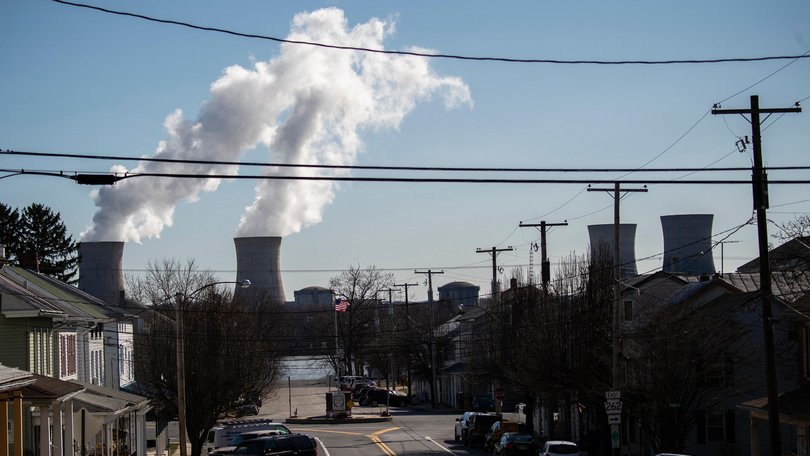ANDREW MILLER: Infamous US nuclear relic Three Mile Island should not be forgotten in nuclear debate

George Bernard Shaw somewhat cynically observed that “we learn from history that we learn nothing from history”.
In the late 1990s I lived in Pennsylvania. In a simpler pre-9/11 world the USA was preoccupied with Seinfeld, Clinton and Gore’s re-election, and OJ Simpson.
My funny accent often made it difficult for the locals to focus on my odd questions — for instance my query about the local phone book. White and yellow pages were a thing last century, along with paper road maps. They worked fine, but we have better tools now.
Sign up to The Nightly's newsletters.
Get the first look at the digital newspaper, curated daily stories and breaking headlines delivered to your inbox.
By continuing you agree to our Terms and Privacy Policy.I asked a work colleague, who shared my office, “why is there an advertisement in here explaining what to do if we hear sirens coming from TMI? What’s TMI?”
He sat incredulous for a few seconds, then asked “you never heard of Three Mile Island?”
Turns out the house we had innocently rented was a 10-minute drive from the huge steam stacks of the infamous nuclear power plant that, to this day, squats on a mud-flat in the cold Susquehanna River.
TMI opened its twin reactors in 1974 and 1978. The second one infamously failed within three months, when a cascade of coolant system faults damaged its core.
A relatively minor leak of radiation led to huge panic made worse by official misinformation — and ruined the brand of nuclear power, accelerating the decline of its take-up in the USA and across the western world.
According to the United States Nuclear Regulatory Commission, the USA generated about 20 per cent of its power from nuclear in 2023. The industry output has been flat for 25 years, and rocketing renewables have recently overtaken it.
At its peak in 1998 there were 112 reactors in the USA. There are 90 still operating over 61 sites, with 22 in a long-term decommissioning phase.
The short-lived TMI-2 reactor remained in active clean-up mode until 1993, and is now under maintenance.
It has cost over US$1 billion in taxpayer money to decommission it so far.
Its more durable twin was shut down in 2019.
After four decades it could no longer compete with cheaper electricity from natural gas and renewables, and the Pennsylvania government denied any further subsidies.
It will cost an estimated US$2.1 billion to decommission it, and will need active management until at least 2079 — 105 years after it came online.
The vulnerability of nuclear plants was thrown into stark relief again on September 11 2001, when all nuclear plants in the USA were put on high security alert during airliner strikes on New York City and Washington.
As we see in Ukraine, nuclear reactors make particularly frightening targets.
It may seem melodramatic to factor in the risk of war and terrorism, but for context the Australian Government recently thought it reasonable to order $368 billion of submarines.
The NRC has published extensive policies about nuclear threats. Not just from aircraft — pilots are prohibited from “loitering” over facilities — but also from cyber interference, theft of radioactive material, dirty bomb production and internal rogue operators.
Locals qualify for free potassium iodide tablets, to be taken in the event of future leaks to prevent the uptake of radioactive iodine into the thyroid gland — the cause of increases in thyroid cancer following the 1986 Chernobyl and 2011 Fukushima accidents.
Japanese children in the proximity suffered 75 times the international incidence of thyroid cancer between 2011 and 2015.
By 2017 the US NRC documented significant leaks and spills of radiation at 43 of the 61 current operating nuclear sites in the USA.
The viability of nuclear power in Australia depends on long-term electricity economics, which must factor in massive security, the potential release of radiation, and the centuries-long management required when decommissioning these plants and their isotopic waste.
Any commitment to nuclear has complex, intergenerational implications — especially for taxpayers.
The question is whether, as with phone books, we simply have better tools now.
